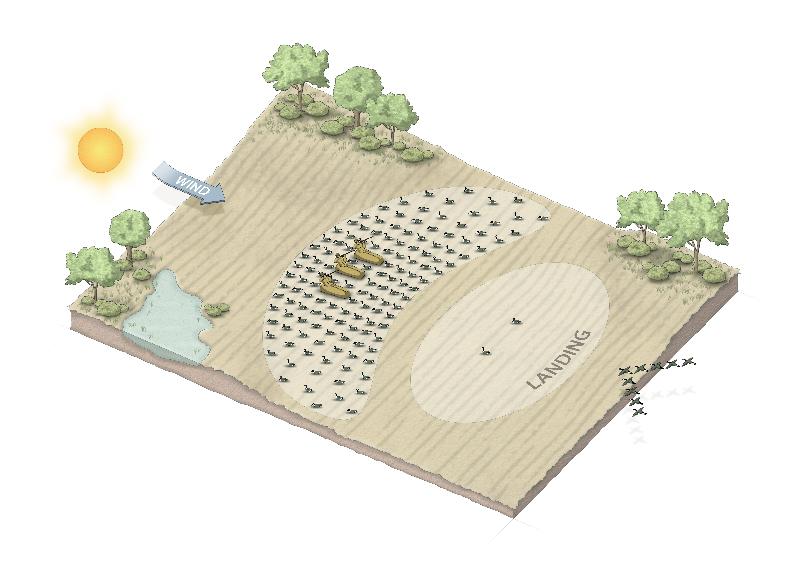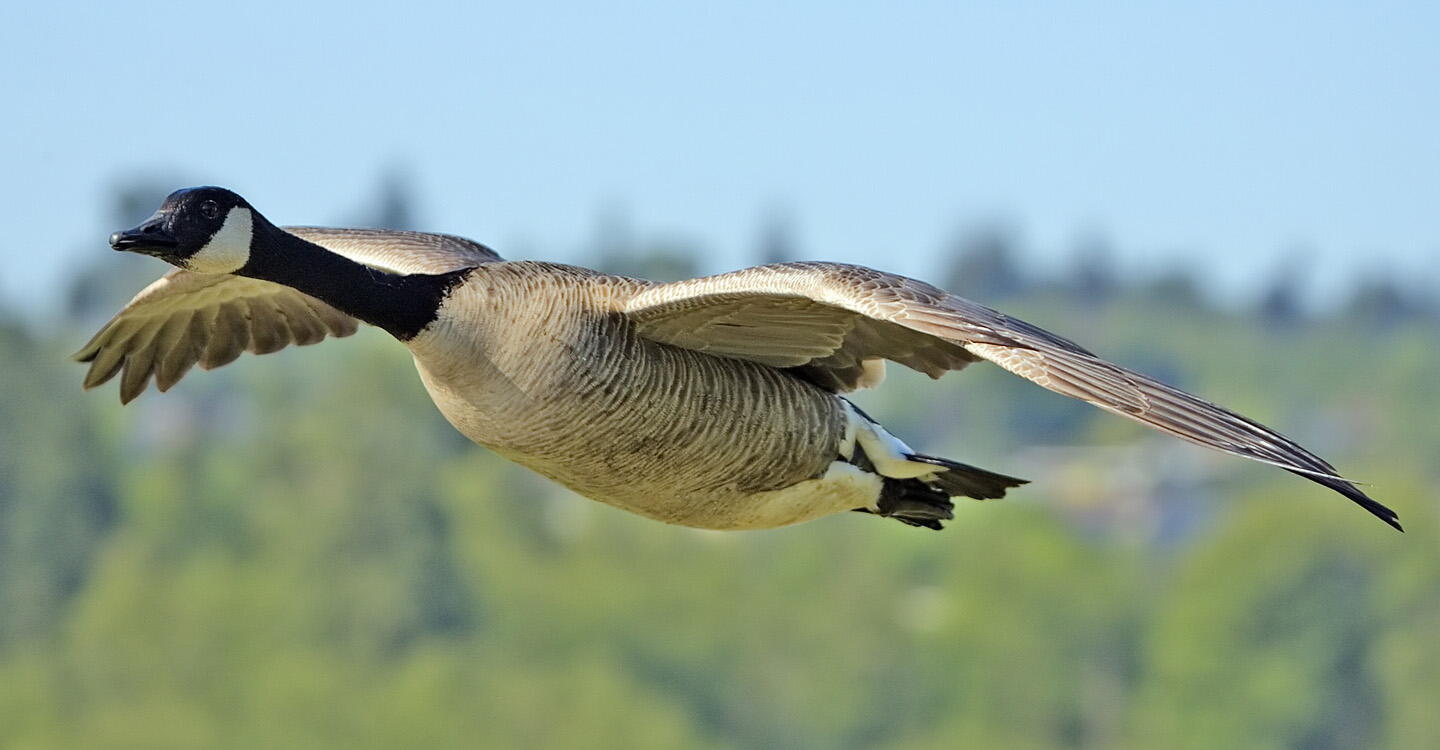The Canada Goose Spread
Use this set-up to bag pressured geese flying in bigger flocks
Advertisement
Outdoor Canada’s 2014 Goose Week also features tips on decoying snow geese and the ultimate combination spread, plus recipes for Goose Stew and Gord’s Gorgeous Goose.
You don’t need a PhD to effectively decoy Canada geese—just use your spotting missions to learn from the birds. Watch the sizes of the groups coming in, how tight they land together, how they spread out after hitting the ground and whether they look content. When you see geese land quickly and feed contently without moving much, you know you’re in for a spectacular hunt the next day.
Advertisement

- The biggest mistake goose hunters make is not leaving a large enough landing zone. A mature goose has a wingspan of two metres, so 10 geese landing wing tip to wing tip need at least 20 metres of space. If the birds don’t have enough room, they’ll often circle the spread again, then land short.
- Spread the decoys at least six steps apart. Canada geese are territorial and want their own space when feeding, sometimes chasing or beating each other with open wings to claim a spot in the chow line.
- The farther birds get from the main flock, the more they spread out. Canadas land in a group for safety, but disperse after hitting the ground. Decoys on the far edges of your spread can be four to six metres apart; this makes your spread look both bigger and more natural.
- Make the landing area obvious to the birds. The more geese look things over, the more nervous they become. A big landing area and a concentration of birds in the centre of the spread, which hides the blinds, makes the geese feel safe. They’ll believe they’re landing close to other birds that have just come in and are still close together.
- Since incoming geese look most closely at the first decoys they see, place your best dekes out front. I set my full-bodied decoys out front and a couple around my blinds. I then use shells to complete the flock.
- Place a concentration of decoys around your blinds to help conceal your presence.
- Place decoys as distance markers, so you know when the birds are in range (this can also be applied to the other two set-ups).

